Real Racing Club de Santander are currently on the brink of a playoff spot to La Liga, with one weekend’s results potentially lifting them to 4th or dropping them down to 11th. With 14 games of the season left, there is lots of time for Racing to build up their points tally where an automatic promotion spot remains possible. The team located in the north of Spain are one of the most attacking sides in the league, although only one of the 100 set plays played directly into the box resulted in a goal.
Interestingly, a further 12-15 goals come from throw-in situations, short free kicks, or the second phase following a corner, where a heavier defensive presence in the box and reduced numbers around the edge of the penalty area allow Racing to access the penalty area with ease and create chances from the byline. The different routines used following short throw-ins (and a very unique kick-off routine reminiscent of Brentford in 2021) warrant another article on how their incisive passes and sharp movements in wide areas are so effective, which we will perhaps come back to later this season.
In this tactical analysis, we will look into the tactics behind Racing de Santander’s direct corner kicks, with an in-depth analysis of why their routines vary from game to game. This set-piece analysis will also look into the different methods used to gain separation and where they could improve in the future to ensure they maximise their potential output in front of the goal.
Interesting Ideas
Racing’s priority is to find the space inside the opposition’s six-yard box and attack those open areas with runs from deeper, where the attacker can arrive in space without their marker. Two attackers are usually located by the corner flag, giving the defensive side the uncertainty of which type of cross will be delivered or if a corner will be taken short, luring defenders away from the six-yard box in the process.
When up against a side with little to no zonal defenders in the front half of the six-yard box, we can see Racing attempting to start on the back half of the six-yard box before arriving at the near edge in the last second. Each attacker targets a different point along the six-yard box, giving the corner taker more options to hit, even with an under-hit/overhit cross.
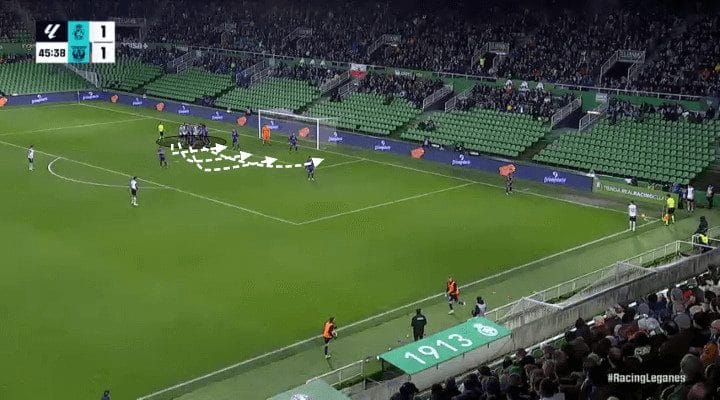
As shown in the image below, the vertical movement of each attacker creates multiple gaps in the defensive structure, meaning that every attacker has space in front of them to attack, allowing them to arrive in space at various points along the six-yard box.
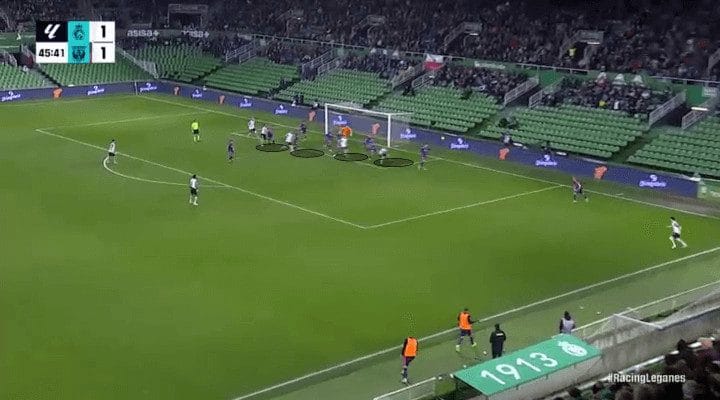
One alternative to this is the reversal of the positioning, with the attacking unit beginning on the near side of the six-yard box before making their movements towards the back post. While this seems similar to the previous routine, the attackers are unable to gain a yard of separation that they could in the defender’s blind side previously, as now the starting positioning means that the defenders are able to remain goalside and keep their markers in sight. As a result, when the attackers try to make their initial movements, the defenders can instantly recognise the danger, get tight to their marker, and position themselves in the path of where they are headed, ensuring that the attackers cannot get to the back post in time.
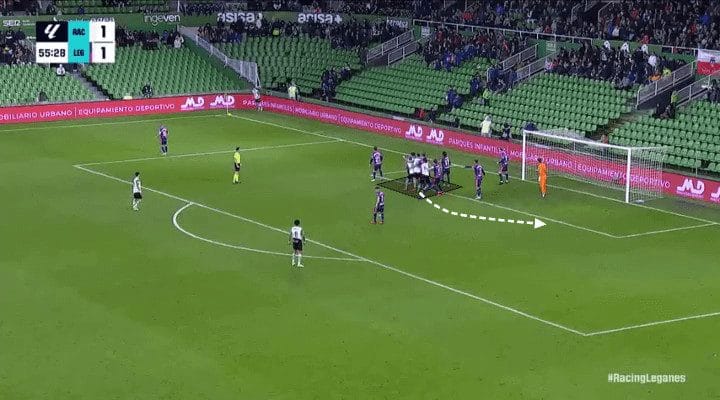
As mentioned in the first routine, where the attacking unit starts around the back half of the six-yard box, it is easier for attackers to gain separation from their markers through their positioning. When the defenders cannot see both the ball and the player simultaneously, it becomes easier to manipulate them. In the earlier examples, when defenders focused on the ball, attackers were able to make the initial movement into space, catching their marker on his heels.
Alternatively, in the scenario below, the defenders are focused on the attackers, not knowing the position of the ball. When this occurs, defenders are vulnerable to being dragged about by the attacker, having to follow their every move.
The attackers are able to position their markers exactly where they want them by moving there with the knowledge they will be followed. In those circumstances, like below, the attacker can cleverly position himself in a position where he can directly move to the desired area whilst his marker has an obstacle in the way.
The defender has minimal time to react to his surroundings, so being aware of all potential obstacles is often challenging. In the case below, the defender has another player in his path while the attacker can arrive in the highlighted zone unopposed.
This shows that when the starting position of attackers is by the back post. Defenders have to either watch the ball or the player; there is always a solution for the attackers to gain separation from their markers, perhaps suggesting why one of the most successful set-piece sides currently in the world, like Arsenal, uses this method to create so many chances in the Premier League.
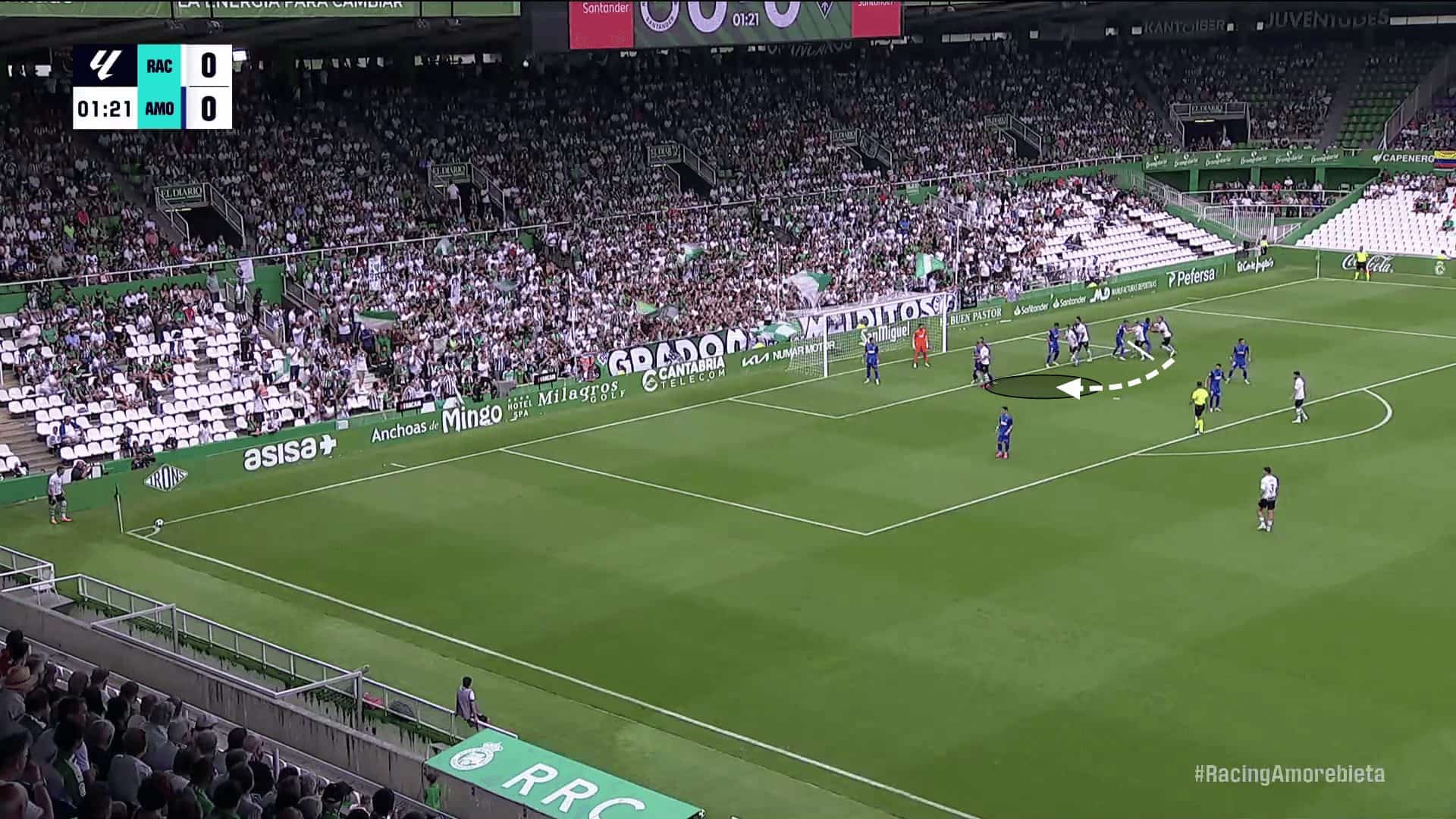
With more zonal defenders scattered around central areas of the six-yard box, there is less potential to find gaps in the areas that were desired earlier. The gaps in the six-yard box are only on the outer edges, on both the near and far sides and slightly deeper around the penalty spot. The aim is to make the first contact on the near side of the six-yard box, causing the zonal defence to disperse and allowing players to find space when attempting to make the second contact.
In this instance, to access the space at the near side of the six-yard box, the attacker uses the cluster of players around the penalty spot as a big screen, where he runs around the obstacle, with his marker having no choice but to follow the attacker’s shadow.
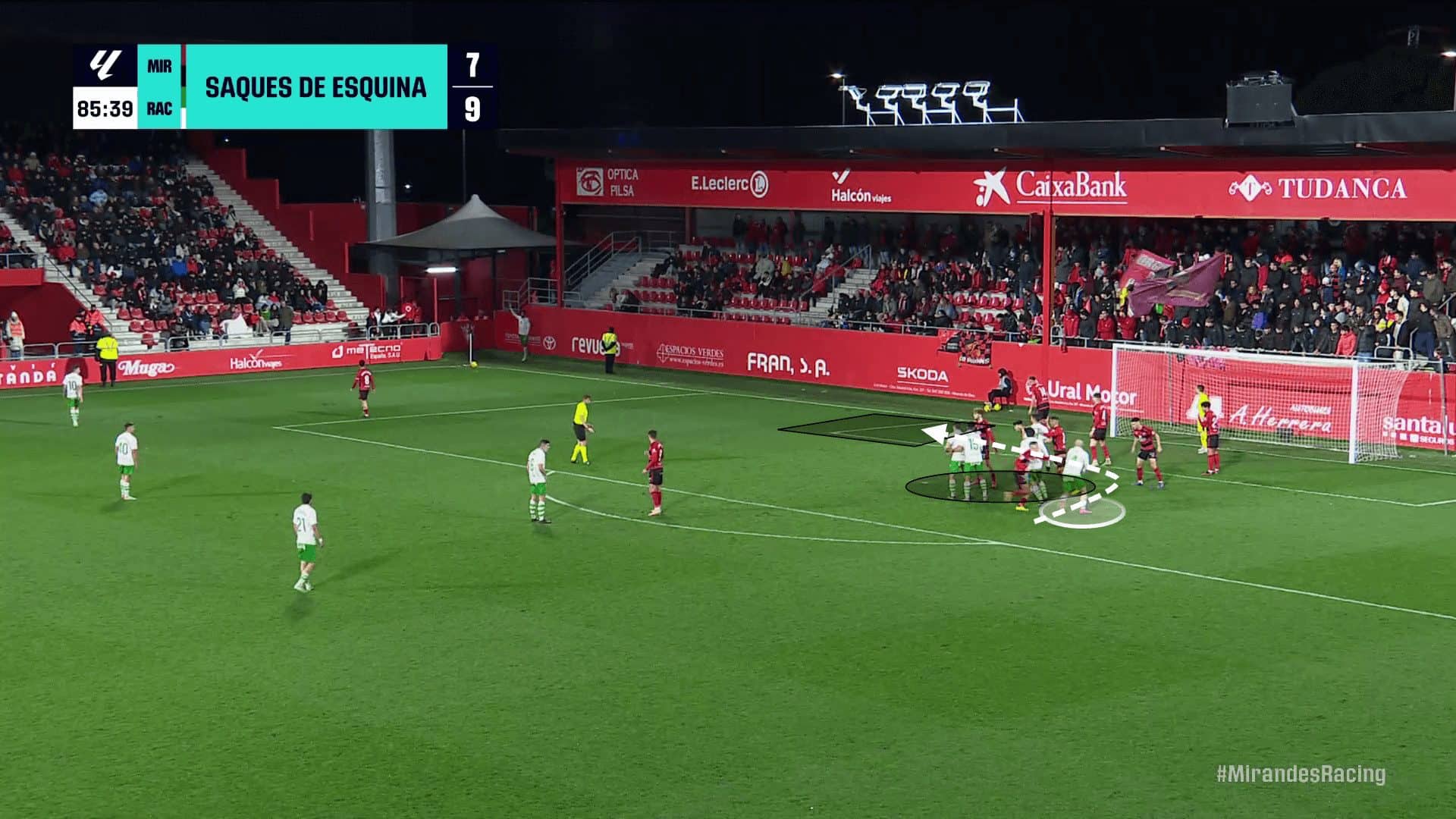
One last method that Racing have used to ensure the first contact is won by a white shirt is through ball-side starting positions, where the ball already has a direct path to the attackers.
This is most commonly used when the attacker already is by the near side of the six-yard box, where he can hold off his marker for as long as possible, before making the move towards the ball in the last second. Usually, separation refers to the attacker being able to attack the ball without disruption, but when the attacker is in a position so close to the goal from the start, there is less of a need to attack the ball but rather just redirect it.
As a result, the attacker doesn’t need separation in the preparation phase of his movement to allow for a free run at the ball, but only at the contact phase, just as he is about to make contact with the ball. This means that he needs a yard of space when the ball is about to arrive on his head, which allows the attacker to hold off his marker until the final second before he has readjusted his head to redirect the ball.
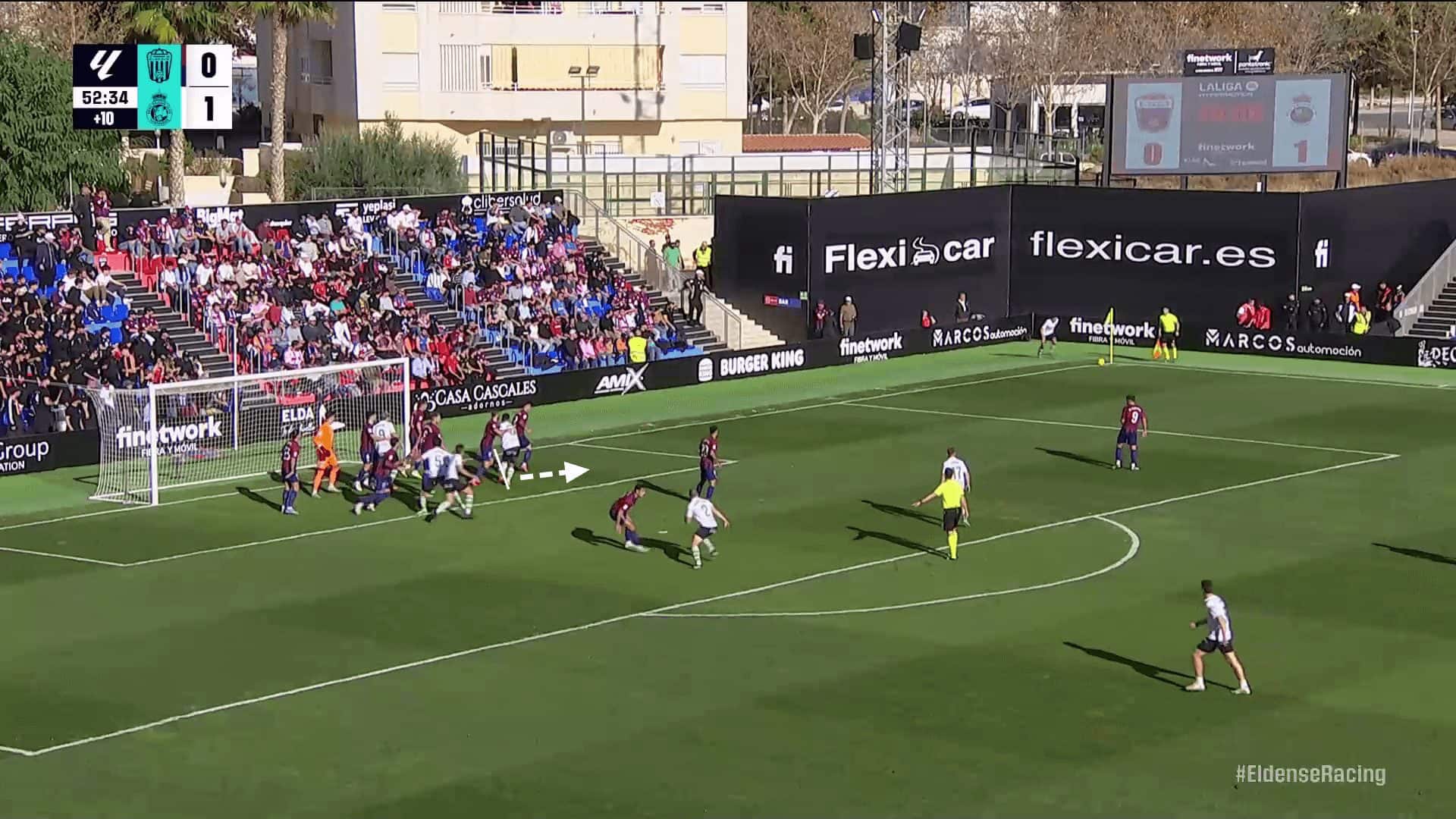
Issues with Gaining Separation
There have been several instances where the runs made by attackers have been made at the wrong time or from unfavourable positions where the attackers are at a disadvantage heading into the aerial duel due to the failure of not getting separation. One scenario where attackers struggle for separation is when the players are positioned inside of the clusters. Clusters, as the name hints, are more packed, so there is less space between players to lose their markers. Being in a cluster allows a defender to stay touch-tight to their marker.
As a result, when an attacker attempts to make their initial movement, a defender can feel the movement being made, meaning they can keep an eye on the ball while their hands keep an eye on the player. This allows them to instantly track the runner, preventing them from arriving in space unopposed. When the space is more limited due to clusters, attackers must use their teammates and other opponents as obstacles for their marker to avoid in order to gain that yard of separation, as it is much harder to gain that yard through sharp movements.
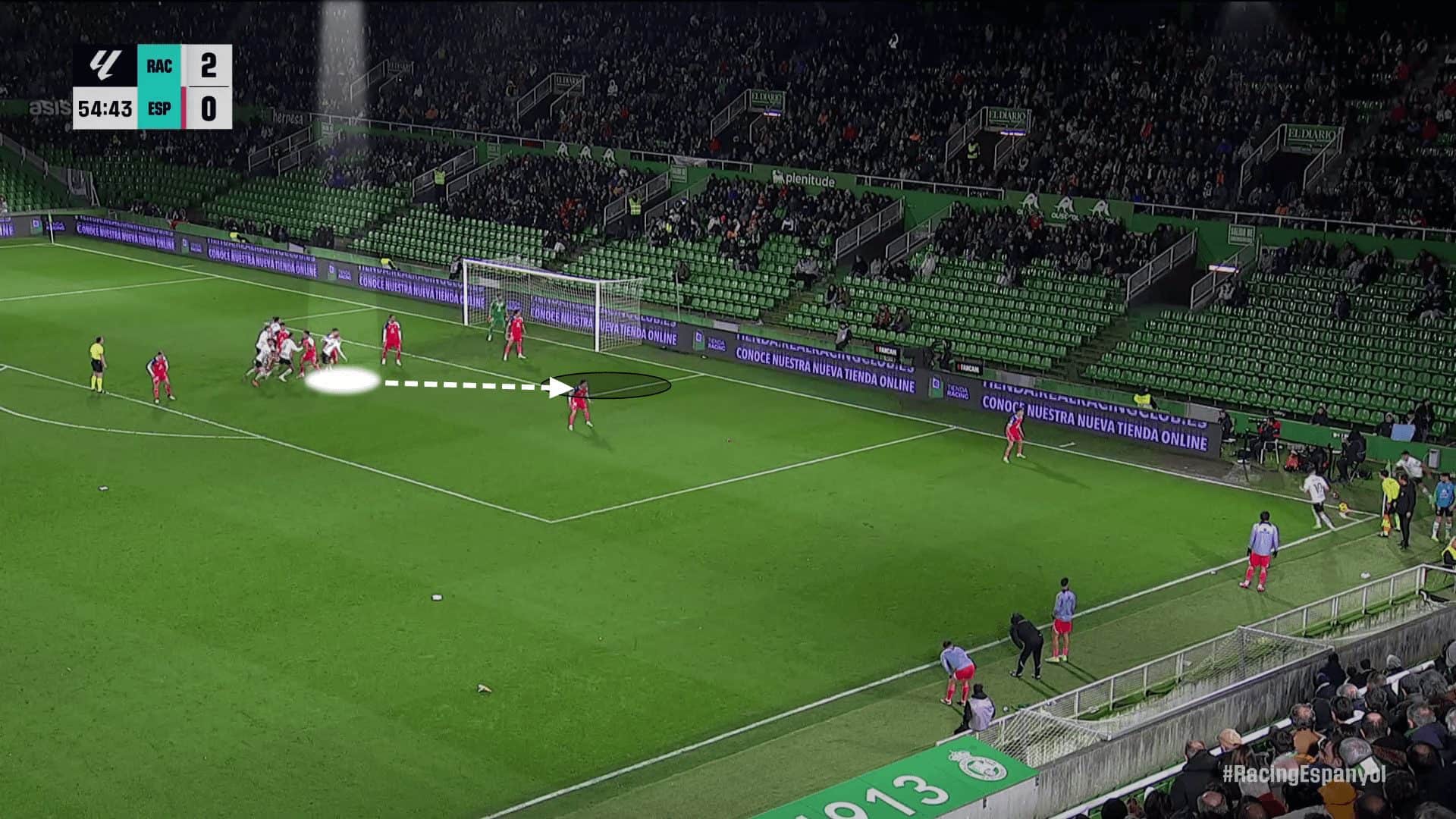
One other issue that has caused Racing to fail to arrive in space unopposed is the use of early screens. A screen is a tool used to prevent a defender from accessing a specific zone. However, Racing show their hand too early, giving defending sides time to adapt to the attackers’ movements. In the example below, we can see a screen is set on the front-most defender of the six-yard box.
However, the screen is made before the corner taker even begins their run-up. As a result, the marker of the attacker who attempts to attack the space can easily identify the space Racing is aiming to attack and be ready to sprint into the space at the same time as the attacker, giving him no head start.
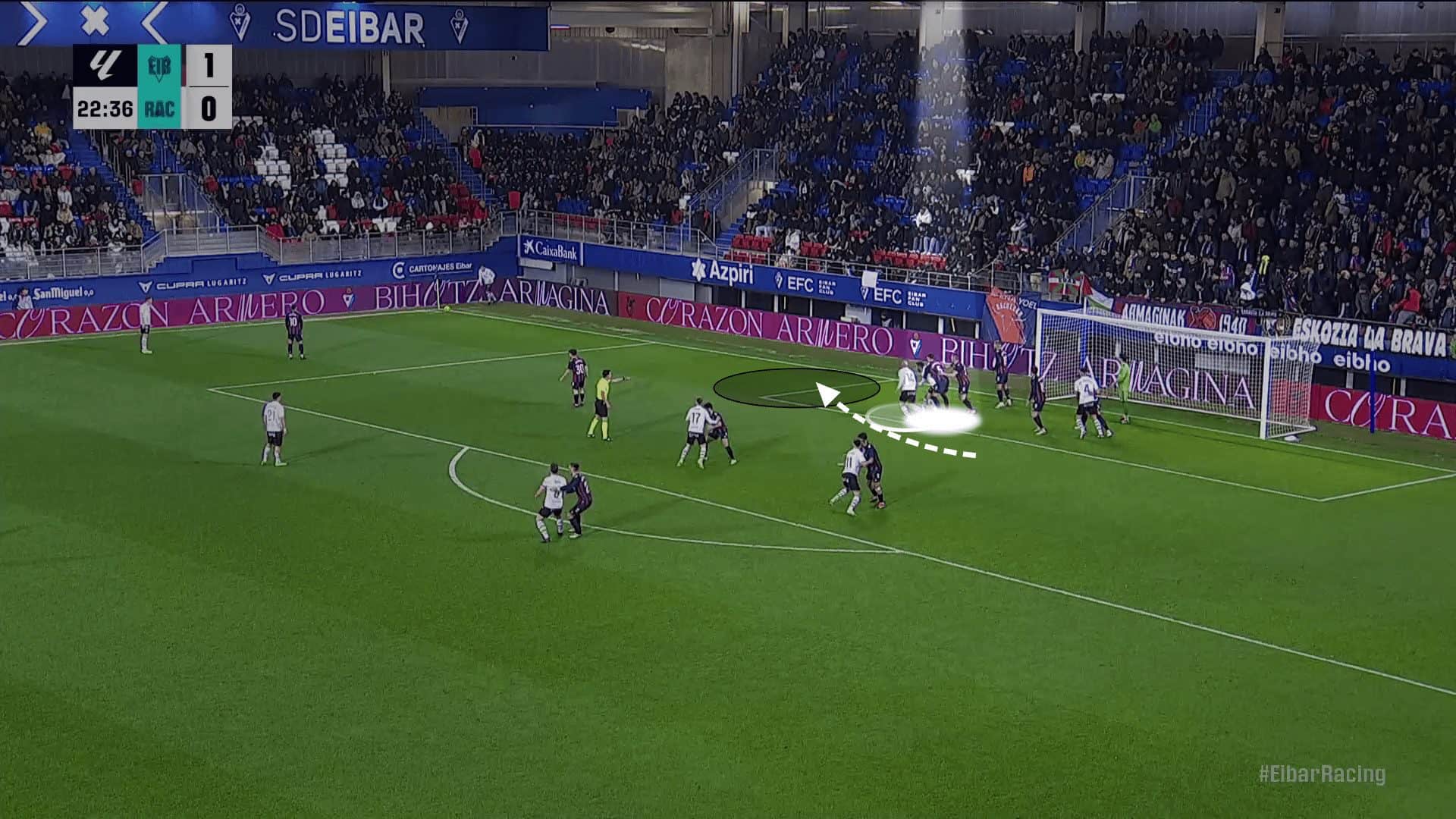
Similarly, in the example below, the attacker sets a screen on the zonal defender, creating space just outside of the six-yard box. However, the screen is set before the corner is taken, giving the other defenders time to react to their surroundings. If the screen was set after/as the ball is played, the other defenders would be focused on the flight of the ball, and unable to recognise the screens which are used. Many teams use simple hand signals to signify when the corner taker is about to deliver the ball, to let their teammates know that is the moment to start setting the screen, rather than attempting it too early or too late.
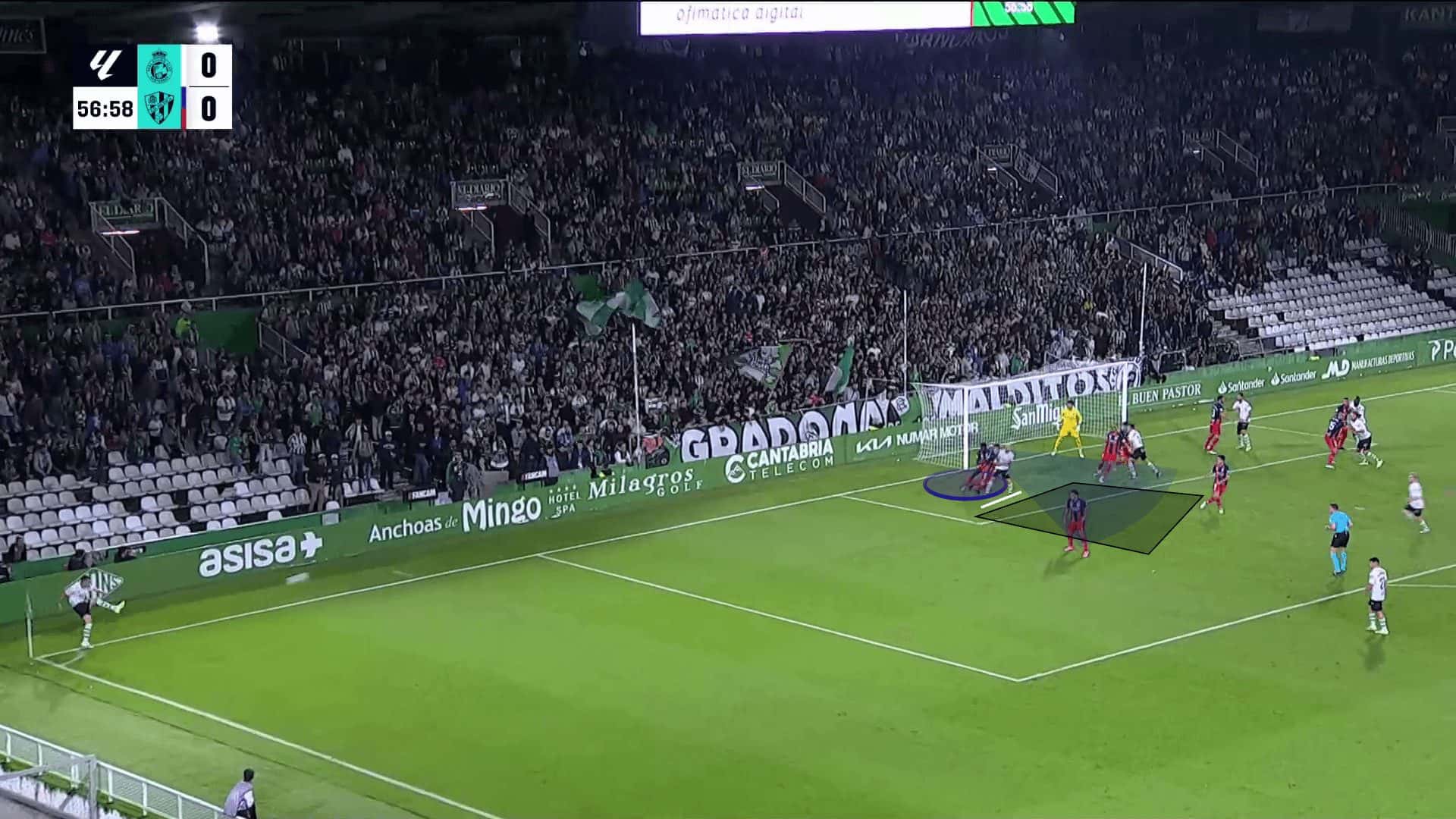
Once the spare zonal defender can recognise the screen before a corner is taken, he is able to anticipate the space which is being targeted and intercept the delivery by arriving in the space before the designated attacker.
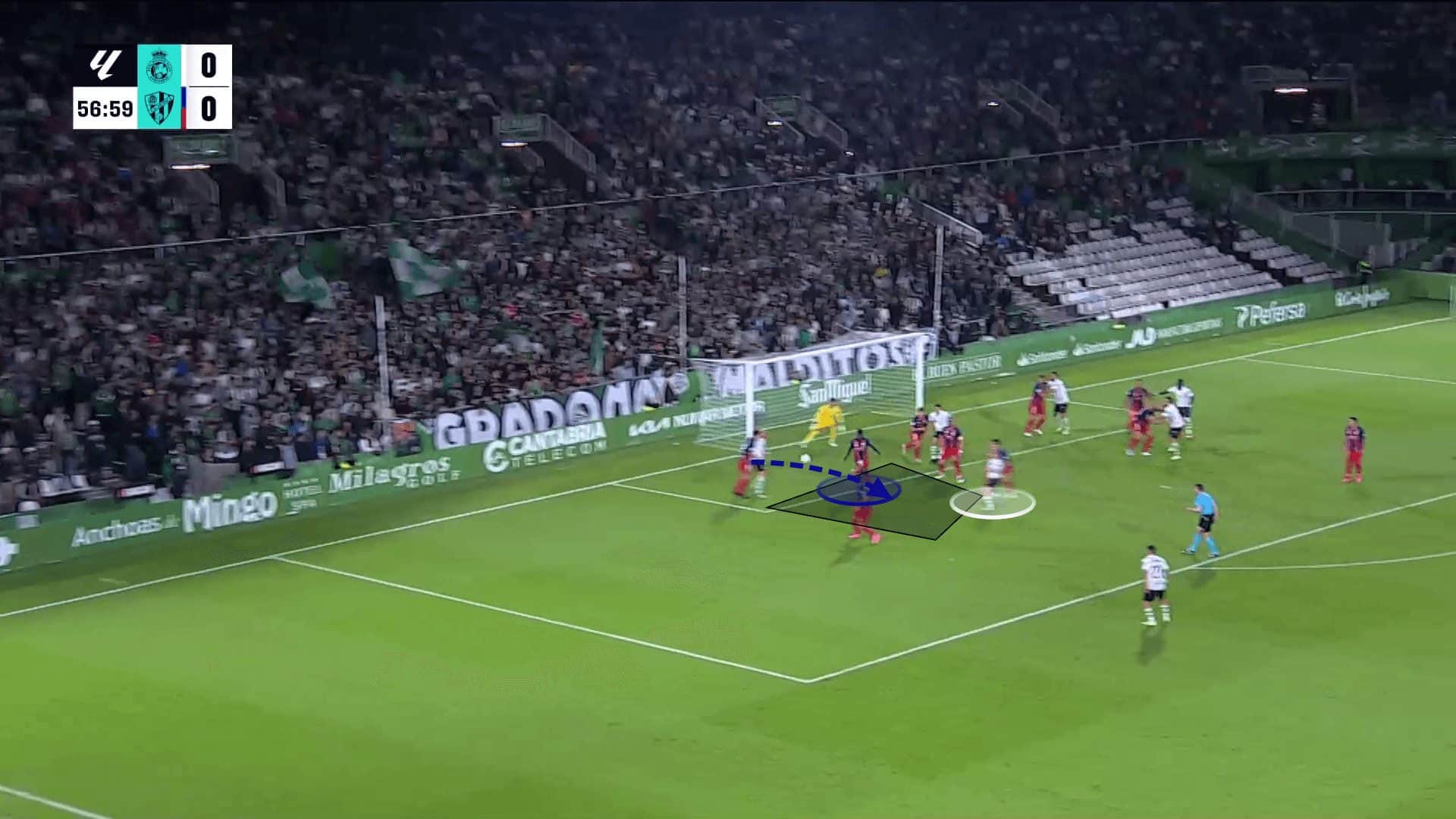
Summary
This tactical analysis has described the numerous ways in which Racing de Santander have been able to use different starting positions, movements, and methods of gaining separation to create advantageous opportunities in the opposition penalty area. However, with the routines varying from game to game, the tactical flexibility has meant that attackers sometimes struggle to adapt to each routine, leading to issues with timing and arriving in space at the right time.
The bravery and creativity of these set plays is extremely admirable and interesting to watch week in and week out, and as time goes on, the players should be able to improve their knowledge and understanding of how to lose a marker depending on their surroundings, and when to make the different movements whether that is to attack the ball or create space for a teammate.






Comments